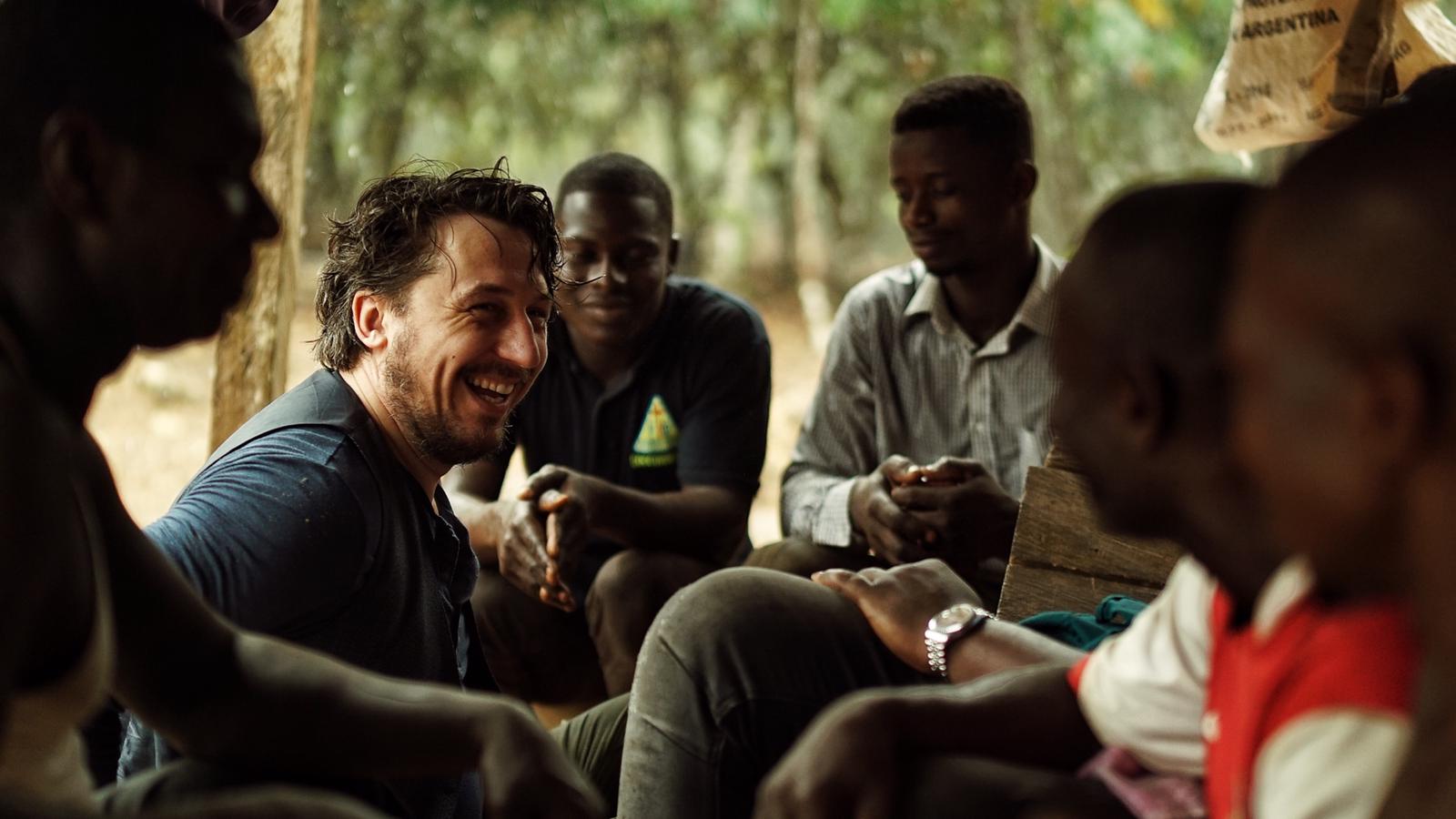On April 21st, RTL-Z will broadcast a documentary on Kumasi juice by Lars Gierveld about the creation process with Ghanaian cocoa farmers and the collaboration with chocolate giant Nestlé. Follow the journey of a journalist becoming a social entrepreneur in the hopes of helping improve lives of cocoa farmers and the struggle between PR and factual journalism.
It’s a difficult thing to research but how fair is fairtrade actually? We’ve all seen the stickers on our wrappers. The green rainforest alliance frog on a Mars bar, UTZ on a Kitkat or the well documented tale of Tony Chocolonely and their battle against modern day slavery. With all these initiatives, how come there are so many impoverished cocoa farmers? That’s what Lars and his partners want to find out with this documentary on RTL-Z. In collaboration with Nestlé, one of the world’s biggest cocoa customers, they flew to the Kumasi region in Ghana to meet with some of the farmers and discuss the problems they face.
So how do you remain impartial when your financier is the one who stands to gain the most when prices are kept low? They started by composing an ironclad contract which states they remain owner of all footage shot during this trip and maintain complete journalistic freedom while working on this project. In return they offer Nestlé the right to respond to every claim they find. Would it have been easier if they found an independent sponsor instead one of the biggest stakeholders in the industry as their partner? Probably, but they wouldn’t have been able to experience and report on the entire production process of making a cocoa product. And that’s exactly what they did. Create something from scratch.
This is where the hard part starts. How to make juice if you have zero experience other than drinking it? It seemed like a logical thing to do because cocoa beans are extracted from fruit. Every cocoa pod (which is what the fruit is called) has 20 to 60 beans inside of it. After the fermentation process to retrieve the beans, the rest of the fruit gets discarded. But why not use it for something else?
For good reason apparently, because it’s not that easy making juice. The product starts to rot and the circumstances of the storage facility are far from ideal. Also, there’s no water supply. The farmers have to walk kilometers to the next town for water. Nestlé promised to build them a water well, but haven’t lived up to it. Now their partnership isn’t just about the farmers, but also a negotiation about keeping promises.
Within a year they managed to boost the farmers’ income, change the classic structure of investigative journalism and create the sweetest drink this summer will have to offer. Thirsty for more information? We just launched a new brand and website for Kumasi Juice. Check it out and be sure to tune in for the documentary this April 21st on RTL-Z. Missed it? No worries, the docu is available on Videoland too.
